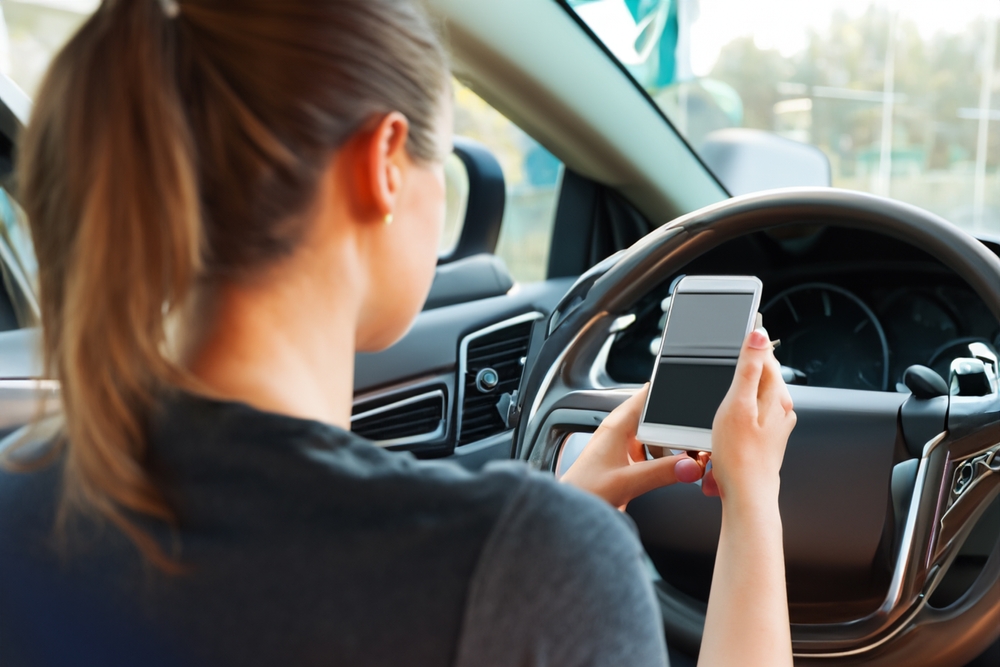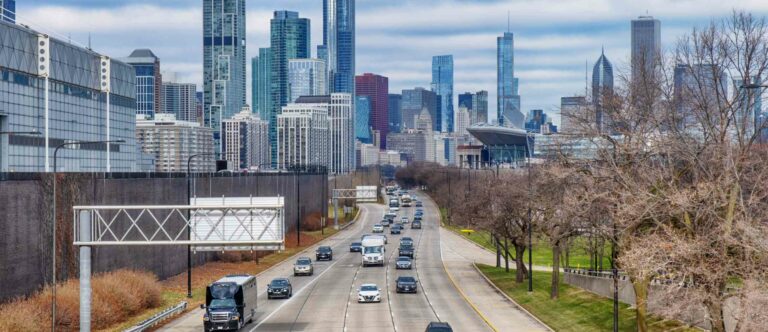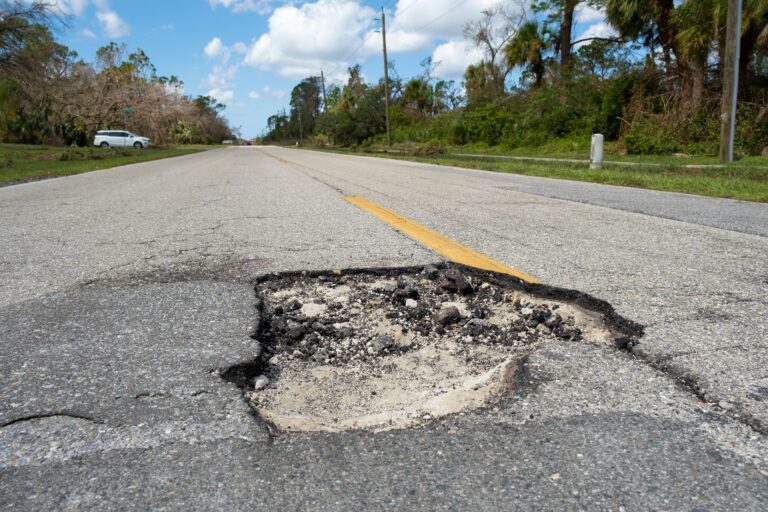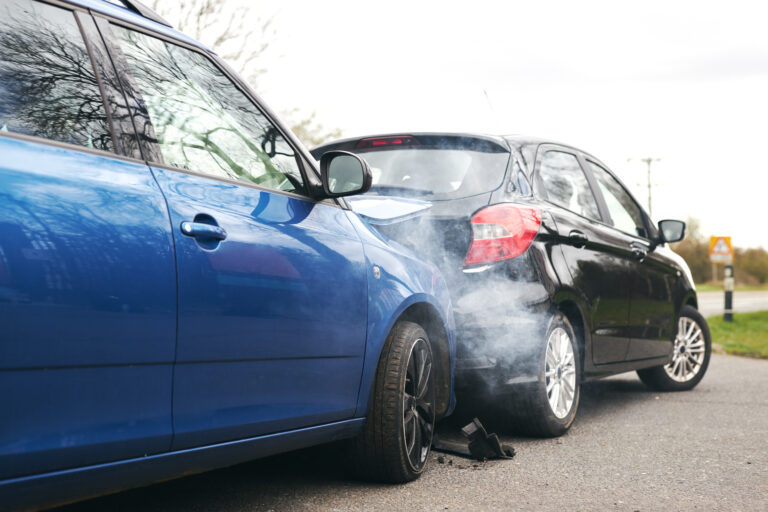Some people drive like the rules are just suggestions, friendly guidelines for lesser mortals. They weave, they speed, they treat public roads like their personal racetrack. Sometimes, this results in nothing more than annoying everyone else. Other times, it ends in shattered glass, deployed airbags, and life-altering injuries.
That kind of driving isn’t just bad; it might be legally defined as reckless. In Illinois, it involves car accident lawyer operating a vehicle with a “willful or wanton disregard for the safety of persons or property.” It’s a conscious choice to ignore the risks.
If you’ve been impacted by potentially reckless actions on the road, you need clarity to sort through this mess. Contact Walner Law at (312) 410-8496 to discuss your situation.
Decoding “Willful or Wanton Disregard”: The Legal Heartbeat of Reckless Driving
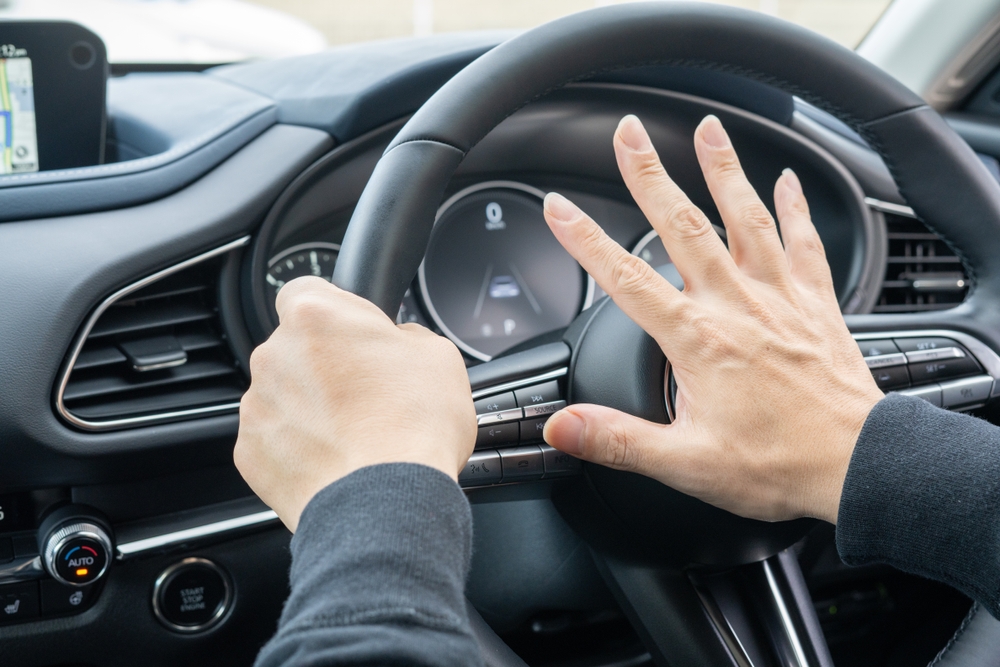
What does “willful or wanton disregard for the safety of persons or property” actually translate to on the asphalt? The Illinois Vehicle Code, specifically 625 ILCS 5/11-503, lays it out. It’s not about accidentally drifting over the line or misjudging speed slightly. It implies something more deliberate, more consciously risky.
- Willful: This suggests intent or purpose. The driver meant to perform the dangerous act, or at least knew it was dangerous and did it anyway. Think intentionally running a red light just to beat traffic, fully aware of the cross-traffic risk.
- Wanton: This points to a reckless indifference to the consequences. The driver might not intend to cause harm, but they know their actions are incredibly risky and choose to ignore that risk. Picture someone weaving through heavy traffic at high speed – they might hope nobody gets hurt, but they’re consciously disregarding the high probability that someone could.
Essentially, it’s about a driver’s mental state. Did they know, or should they have known, that their driving created an unreasonable risk of harm, and did they ignore that risk? This elevates the behavior beyond simple negligence (like briefly looking away from the road) into something the law treats more severely.
The statute also includes a peculiar, but specific, example: knowingly using an incline (like a bridge approach or railroad crossing) to make the vehicle airborne. While maybe less common than extreme speeding, it clearly illustrates the “willful or wanton disregard” standard. It’s an action so obviously dangerous that it falls squarely under the definition.
Real-World Examples of Reckless Acts
Knowing the legalese is one part of the puzzle. Recognizing reckless driving when you see it (or experience its consequences) is another. While the “making your car airborne” example from the statute is memorable, most reckless driving looks a bit more common, though no less dangerous. Context always matters, but certain behaviors frequently cross the line from careless to reckless under Illinois law:
- Extreme Speeding: We aren’t talking 5 or 10 mph over the limit on an empty highway. Driving significantly faster than conditions allow, especially in heavy traffic, construction zones, or school zones, demonstrates a disregard for safety. Illinois law specifically notes speeding 35 mph or more over the limit can be charged as reckless driving.
- Aggressive Weaving and Lane Changes: Darting between lanes without signaling, cutting off other drivers, or forcing others to brake suddenly isn’t just annoying; it’s dangerous and can show wanton disregard.
- Ignoring Traffic Signals and Signs: Deliberately running red lights or stop signs, especially at speed, clearly endangers others.
- Street Racing: Engaging in speed contests on public roads is a textbook example of willful disregard for safety.
- Driving Under the Influence (DUI): While DUI (625 ILCS 5/11-502) is a separate charge, driving while significantly impaired by alcohol or drugs inherently involves a wanton disregard for the safety of everyone on the road. Sometimes, a DUI charge might be pleaded down to reckless driving, or the behavior leading to a crash might be characterized as reckless due to impairment.
- Tailgating Aggressively: Following dangerously close, especially at high speeds, leaves no room for error and demonstrates indifference to the risk of a rear-end collision.
- Illegal and Dangerous Passing: Passing in a no-passing zone, on a blind curve, or forcing oncoming traffic off the road fits the definition.
- Knowingly Operating an Unsafe Vehicle: Driving a car with known critical safety failures (like non-functional brakes) could potentially qualify, as it shows disregard for the risks posed to others.
- Extreme Distraction: While glancing at a map might be simple negligence, engaging in prolonged, highly distracting activities (like watching videos while driving) could rise to the level of wanton disregard.
It’s rarely just one isolated action but often the combination and severity of actions, demonstrating the driver’s dangerous state of mind, that leads to a reckless driving determination.
Reckless vs. Aggressive Driving: Is There a Real Distinction?
You hear “aggressive driving” and “reckless driving” thrown around, sometimes interchangeably. While they sound similar and involve bad behavior behind the wheel, there are subtle but meaningful differences, particularly in how Illinois law treats them.
Aggressive driving usually refers to a pattern of specific traffic offenses committed with the intent to intimidate, harass, or obstruct other drivers. Think:
- Tailgating deliberately.
- Speeding specifically to menace another driver.
- Cutting people off intentionally.
- Making rude gestures or shouting.
- Brake-checking.
Aggressive driving describes the actions and often the intent to bully or provoke. It might result in multiple traffic tickets for specific violations (speeding, improper lane change, following too closely).
Reckless driving, as we’ve discussed, is a specific criminal charge focused on the driver’s mental state: the “willful or wanton disregard for safety.” While aggressive actions can certainly be evidence of reckless driving, the legal focus for a reckless driving charge is less on the intent to intimidate and more on the conscious indifference to the risk of harm.
Think of it this way:
- Aggressive Driving: Might be charged as several separate traffic violations based on observable actions (often linked to road rage).
- Reckless Driving: Is a distinct criminal misdemeanor (or felony, in severe cases) based on proving a dangerous state of mind (willful/wanton disregard), which might be demonstrated by aggressive actions, extreme speeding, or other hazardous maneuvers.
Essentially, many aggressive driving behaviors easily meet the “willful or wanton disregard” standard needed for a reckless driving charge. Illinois law sometimes uses “reckless driving” to encompass conduct often labeled elsewhere as “road rage.” The key takeaway is that reckless driving is a specific, serious criminal offense in Illinois, not just a descriptive term for bad driving.
Penalties for Reckless Driving in Illinois
Getting tagged with reckless driving isn’t like getting a parking ticket you can just mail in. Because it signifies a serious disregard for safety, Illinois law attaches significant penalties. Ignoring these potential consequences is a mistake, whether you’re the one charged or the victim of someone else’s recklessness.
Under 625 ILCS 5/11-503, standard reckless driving is typically charged as a Class A Misdemeanor. This is the most serious class of misdemeanor in Illinois and carries potentially heavy consequences:
- Jail Time: Up to 364 days in county jail.
- Fines: Up to $2,500 (plus court costs, which add up).
- Driver’s License Points: A conviction adds points to your driving record. For drivers under 21, even one point can trigger a license suspension. For adults, accumulating three moving violations (including reckless driving) within 12 months leads to suspension.
- Criminal Record: A misdemeanor conviction creates a permanent criminal record, potentially impacting job prospects, housing applications, and professional licenses.
- Insurance Hikes: Expect your auto insurance premiums to skyrocket.
Court Supervision: Sometimes, particularly for first offenders, a judge might grant “supervision.” This avoids a formal conviction if the defendant completes certain conditions (like paying fines, attending traffic school). However, getting supervision for reckless driving means you become ineligible for supervision on any future reckless driving or first-time DUI charge – it’s a one-time deal.
When Recklessness Causes Harm: Aggravated Reckless Driving
The situation becomes much more serious if reckless driving results in injury. The charge can escalate to Aggravated Reckless Driving, a felony:
- Class 4 Felony: If the reckless driving causes bodily harm to a child or a school crossing guard performing their duties. Penalties include 1-3 years in prison and fines up to $25,000.
- Class 4 Felony: If the reckless driving causes great bodily harm, permanent disability, or disfigurement to anyone. Penalties include 1-3 years in prison and fines up to $25,000.
- Class 3 Felony: If the reckless driving causes great bodily harm, permanent disability, or disfigurement to a child or a school crossing guard performing their duties. Penalties increase to 2-5 years in prison and fines up to $25,000.
A felony conviction carries devastating long-term consequences beyond prison and fines, including loss of voting rights and the right to own firearms. Clearly, a reckless driving charge or its aftermath is something to take very seriously.
Building Your Case: How Recklessness is Proven in Civil Court
If you were injured by a reckless driver, you have the right to sue them for damages in civil court. This is separate from any criminal charges the driver might face. While a criminal conviction for reckless driving (under 625 ILCS 5/11-503) is powerful evidence in your civil case, it’s not strictly required. You can still prove the driver was reckless even if they weren’t ticketed or were acquitted in criminal court.
The key difference lies in the burden of proof.
- Criminal Court: The prosecution must prove the driver guilty “beyond a reasonable doubt.” This is a very high standard.
- Civil Court: You (the plaintiff) need to prove your case by a “preponderance of the evidence.” This means showing it’s more likely than not (more than 50% probable) that the other driver acted recklessly and caused your injuries.
You build your case using various types of evidence:
- Police Accident Report: This report contains the investigating officer’s observations, diagrams, witness statements, contributing factors noted, and whether any citations (like reckless driving, speeding, DUI) were issued. While not always admissible as direct evidence of fault, it’s a starting point.
- Eyewitness Testimony: Statements from passengers, pedestrians, or other drivers who saw the accident and the reckless behavior leading up to it can be compelling.
- Driver’s Own Statements: Any admissions the driver made at the scene (e.g., “I was going way too fast,” “I didn’t see the light”) can be used against them.
- Video Footage: Dashcam footage (from your vehicle, the other driver’s, or witnesses), traffic light cameras, or surveillance video from nearby businesses can provide objective proof of dangerous driving.
- Accident Reconstruction: In complex cases, professionals can analyze physical evidence (skid marks, vehicle damage, final resting positions) to reconstruct the accident sequence and determine speeds, movements, and contributing factors, often demonstrating reckless actions.
- Physical Evidence: Vehicle damage patterns, debris fields, and road marks tell a story about the forces involved.
- Cell Phone Records: If distracted driving is suspected, phone records might show usage around the time of the crash (though obtaining these usually requires legal action).
- Evidence of Intoxication: Breathalyzer results, blood tests, or officer observations regarding impairment are strong indicators of recklessness.
- The Driver’s Criminal Conviction: If the driver was convicted of reckless driving or DUI related to the accident, this conviction can often be used as strong evidence of fault in your civil claim.
A skilled personal injury lawyer knows how to gather, analyze, and present this evidence effectively to demonstrate that the other driver’s actions weren’t just careless, but met the legal standard for recklessness, entitling you to compensation.
Compensation You Can Seek

When someone else’s reckless disregard for safety turns your life upside down, Illinois law allows you to seek compensation – known legally as “damages” – to cover the harm you’ve suffered. The goal isn’t to profit from the accident, but to restore you, as much as money can, to the position you were in before the crash occurred. Illinois is an “at-fault” state, meaning the person responsible for the accident (and their insurance) pays for the damages.
If you successfully prove the other driver was negligent or reckless, you can typically pursue compensation for several types of losses:
- Economic Damages (Tangible Losses): These are the straightforward, calculable financial costs resulting from the accident.
- Medical Expenses: All costs related to treating your injuries – ambulance rides, emergency room visits, hospital stays, surgeries, doctor appointments, physical therapy, chiropractic care, medications, medical equipment (crutches, wheelchairs), and estimated future medical care needs.
- Lost Wages: Income you lost because you couldn’t work while recovering. This includes salary, hourly wages, commissions, bonuses, and freelance income.
- Loss of Future Earning Capacity: If your injuries permanently reduce your ability to earn income at the same level as before the accident.
- Property Damage: The cost to repair or replace your vehicle and any personal property damaged in the crash (like a laptop or phone).
- Other Out-of-Pocket Expenses: Costs like hiring help for household chores you couldn’t perform, modifying your home for accessibility, or transportation costs for medical treatment.
- Non-Economic Damages (Intangible Losses): These compensate for the real, but harder-to-quantify, human costs of the accident.
- Pain and Suffering: Compensation for the physical pain, discomfort, and general suffering caused by your injuries.
- Emotional Distress: Compensation for the psychological impact, such as anxiety, depression, fear, insomnia, or PTSD resulting from the trauma of the accident and its aftermath.
- Loss of Normal Life (or Loss of Enjoyment of Life): Compensation for the inability to participate in activities and hobbies you enjoyed before the injury, or the general diminishment of your quality of life.
- Disfigurement: Compensation for permanent scarring or physical alterations caused by the injuries.
- Punitive Damages: In rare cases involving extreme recklessness – conduct showing an utter indifference to or conscious disregard for the safety of others – Illinois courts may award punitive damages. These are not meant to compensate the victim but to punish the wrongdoer and deter similar conduct by others. Proving eligibility for punitive damages requires meeting a high legal standard, often demonstrating malice or truly egregious behavior.
Illinois Comparative Negligence: Keep in mind Illinois uses a “modified comparative negligence” rule (735 ILCS 5/2-1116). If you are found partially at fault for the accident, your compensation will be reduced by your percentage of fault. If you are found to be more than 50% at fault, you cannot recover any damages at all. This makes proving the other driver’s recklessness even more important.
Reckless Driving Wrecks Lives. Walner Law Fights Back.
Let Walner Law help you reclaim control. We understand the complexities of proving recklessness and fighting for the full compensation personal injury attorney you deserve. Don’t let someone else’s dangerous behavior dictate your future.
Call us today at (312) 410-8496 for a straightforward discussion about your case.


 Skip to content
Skip to content

